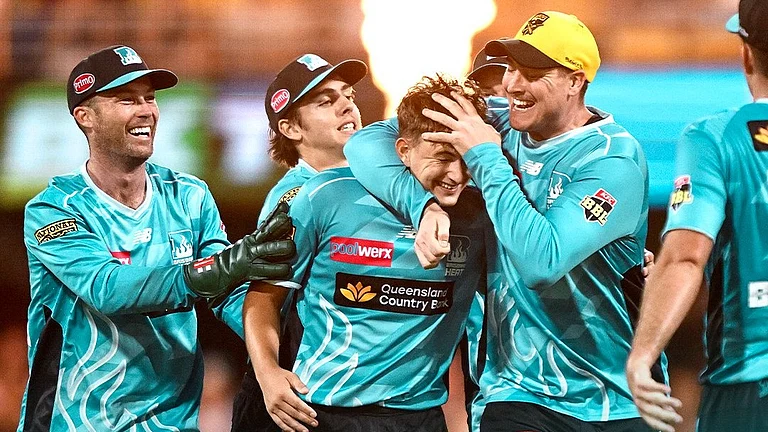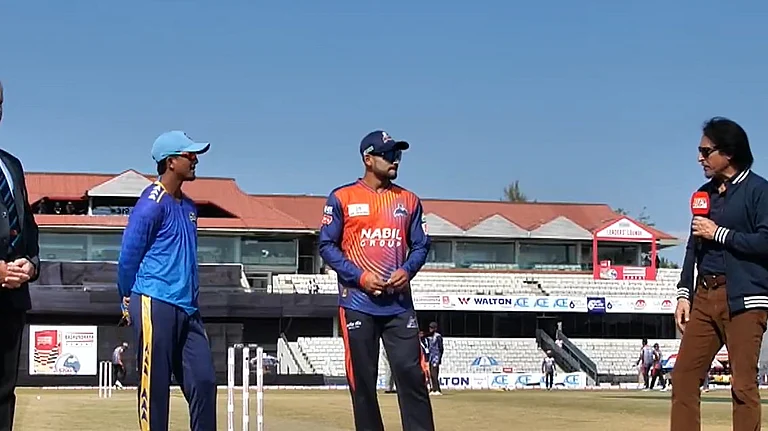A roomful of people talking to themselves, gesticulating, some with their eyes rolled back. (More Sports News)
To an outsider, this would appear to be some freak show. But it is a common sight at elite sports events, such as the ongoing World Athletics Championships in Oregon, where Neeraj Chopra and Rohit Yadav will compete in the javelin final on Sunday at 7.05 am IST.
The people in the room seemingly acting crazy are actually athletes visualising their contest. They imagine everything, such as their movements, emotions, fears and the sights and sounds of the stadium.
Neeraj has been using visualisation for a long time. In an interview before last year’s Tokyo Olympics, where he won the gold medal, the 24-year-old had said, “I keep visualising my throws in Tokyo. I imagine the setting and the area and how I will perform. I do this so that it won’t feel like a new experience when I am actually there and so that I won’t be overwhelmed by the situation."
Visualisation is not a new technique. People across fields have used it before speeches, creative performances or job interviews. In sports, athletes dating back to the path-breaking Billie Jean King have practiced visualisation. In the Indian context, Sachin Tendulkar would play out entire overs in his head the night before a match.
Contemporary visualisation, however, is of a more detailed, granular kind, and therefore known as ‘imagery’.
“You have to smell it. You have to hear it. You have to feel it, everything,” the American skier Emily Cook once told New York Times. “Oh, yeah, it’s ridiculous; we’re all up there flapping our arms. It looks insane, but it works.”
However much an athlete prepares, real life has a way of throwing a curveball at the worst possible moment. In such cases, the athlete has to think and grit their way through.
Indian weightlifter Mirabai Chanu suffered agonising menstrual cramps the day before her round in the 49kg category at the Tokyo Olympics. This precipitated a change in her strategy. Wanting to send a message to her rivals, she committed to a challenging entry total of 210kg a day before the event. It was 5 kg more than her personal best and the highest in the eight-woman fray.
Chief coach Vijay Sharma later told The New Indian Express, "She (Chanu) realised on the eve of the competition that her period had started. She could have delayed it but decided against it. Setting the highest entry total was a kind of tactical move to send out a strong warning to her opponents that she is fully fit and raring to go.”
To a nation’s delight, Chanu won the silver medal, hauling 115kg in her final successful lift. Speaking about the painful night before, she later said, “There was doubt in my mind because your body starts reacting differently [in such situations]. But I kept my focus and stopped thinking about it later.”
A frequently discussed aspect of preparation, although not in India, is sex during competition. Conventional wisdom is to abstain, so that strength and aggression are preserved. Another theory is that a reasonable amount of bedroom action keeps athletes relaxed. That is why players of today are often allowed to see their partners at least a few times during a tournament.
Earlier, it was not so. One of the most famous stories on the subject involves American long-jumper Bob Beamon.
The night before his final at the 1968 Mexico Olympics, Beamon was gripped by anxiety.
“I was all nerves. I went out and had a few shots of tequila – a little something to settle myself in,” he told The Guardian.
Beamon then got physical with his girlfriend, breaking what was a covenant of professional sports in that era. Post-act, as often happens, the Regret Express slammed into him.
But the next day, Beamon had a pep talk with himself, and leapt a motile, unprecedented 8.90m (29 ft 2 ⅜ in). It was a world record that stood 23 years. It still remains an Olympic record, even though it’s been over five decades. Perhaps, all athletes need to go on a date the night before.


























